The first time you see a blue egg you might be surprised. Eggs are supposed to white, right? This might make you think that you have a rare bird living in your yard. So what kind of birds lay blue eggs?
There are actually many species of birds that lay blue eggs. Red-winged blackbirds, Dunnocks, House Finches, and Black Tinamous are some of the most common birds that lay blue eggs. If you find a nest with blue eggs in it, we recommend watching from a distance to see what kind of bird comes back to the nest.
Let’s learn more about what kind of birds lay blue eggs.
Red-winged Blackbird (Agelaius phoeniceus)

The red-winged blackbird is one of the most abundant birds across North America. The male red-winged blackbird is black with yellow and red shoulder patches. The female red-winged blackbird is darkish brown, has a white eyebrow, and is slightly paler on the breast.
Dunnock (Prunella modularis)

Found along woodland edges, gardens, parks, and hedgerows, the Dunnock is a relatively small bird that feeds on small insects, worms, and seeds. Males and females will are paired for life, but the female will mate with other males, laying up to five eggs at a time.
The dunnock is also known as a Hedge Sparrow, although it is not related to the sparrow family.
House Finch (Haemorhous mexicanus)
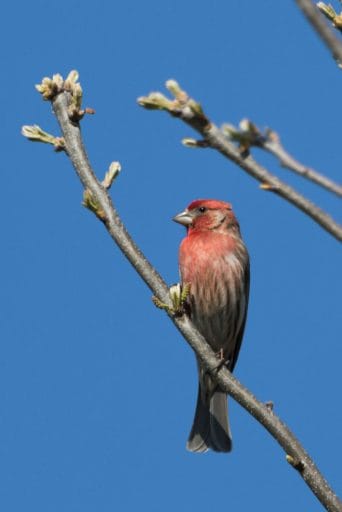
Adult House Finches have a brown tail that is square-tipped and quite long. They are a dullish brown on their backs and have wing feathers that are grey. The flanks are usually streaked, as are their breasts and feathers. Adult females have streaked underparts, and their upper parts are brown.
Interesting fact: Of all the birds in North America, the house finch has the most vegetarian diet consisting of ninety-seven percent vegetable matter.
Gray Catbird (Dumetella carolinensis)

Although they appear completely grey, catbirds have a black cap and a blackish tail with a brown patch underneath. They can be found in most of North America and migrate to Mexico and Central America in the winter.
Interesting Fact: Catbirds can sing for up to ten minutes at a time and are able to produce over one hundred different types of sounds.
Black Tinamou (Tinamus osgoodi)

The Black Tinamou is found along the Eastern slopes of the Andes in the cloud forest; they are large and extremely rare. With dullish brown underparts, they are hard to see in the field. Similar to other forest tinamou, you have more chance of hearing them than seeing them. Vocalizations include a series of low, modulated whistles and a low, drawn-out coo, similar to a dove but longer.
Common Myna (Acridotheres tristis)

The common myna (also known as the Indian Myna or Indian Mynah) is a member of the starling family. It is brown, has a yellow bill, yellow legs with a blackhead. Large white wing patches are evident when in flight.
Linnet (Linaria cannabina)

A small passerine bird, the Linnet is a member of the finch family. Scientifically known as Linaria, due to its fondness of hemp and flax seeds, Linen is made from the flax plant.
Blue Jay (Cyanocitta cristata)

Blue Jays are highly adaptable and extremely intelligent birds and are natural forest dwellers. Most bird feeders in North America are familiar with these common and often noisy birds. The Blue Jay is able to expertly mimic several Hawk calls.
Song Thrush (Turdus philomelos)
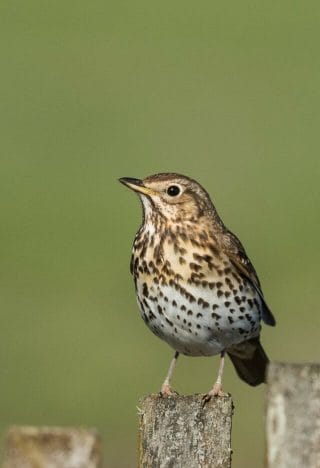
The Song Thrush breeds across the Palearctic. It has three subspecies and characteristics include: buff or black-spotted underparts, and its upperparts are brown. Repeated musical phrases form a distinctive song, often referred to as poetry. The feature photograph is of Song Thrush eggs.
Eastern Bluebird (Sialia sialis)
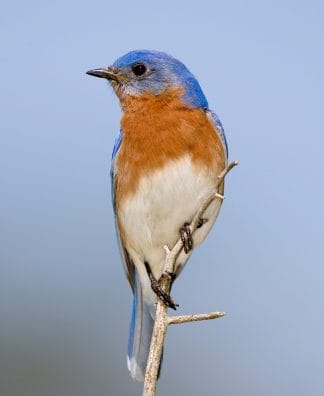
Eastern Bluebirds are extremely common in summer and are often seen perching on poles or sitting on telephone wires in the countryside. Male Eastern Bluebirds are a beautiful royal blue on their head and back, with a breast that is reddish-brown.
Females are greyer in color yet look elegant with blue tinges in the wings and tail.
Snowy Egret (Egretta thula)
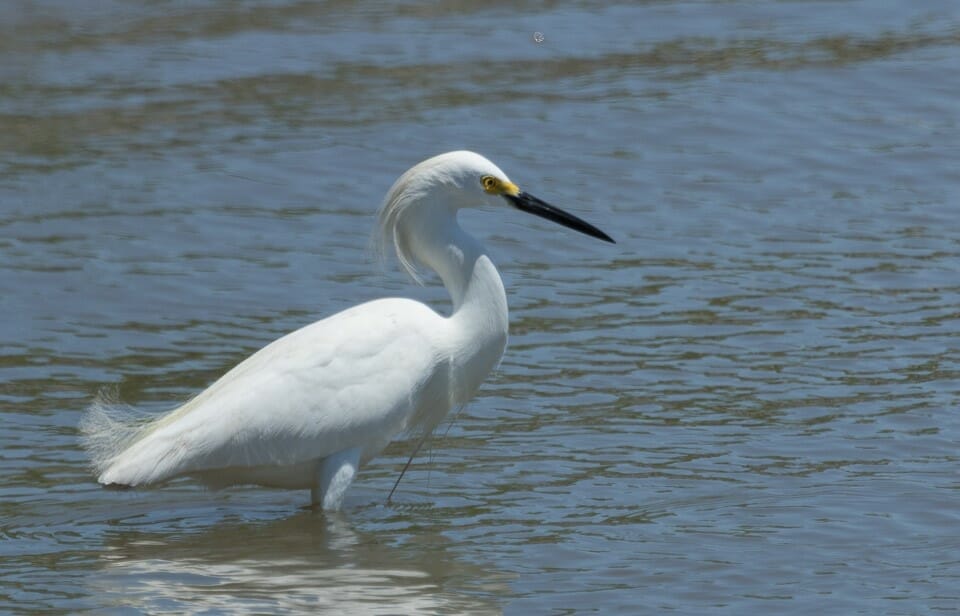
Snowy Egrets are white herons with a black bill, medium in size, they have yellow lores. Adults have yellow feet and black legs. Juveniles have legs and feet that are greenish-yellow.
Snowy Egrets forage in the wetlands in a relatively active style when compared to the Great Egret, which moves extremely slowly. The Snowy Egret has a bill that is larger than the Cattle Egret and, rather than walk in fields, is more likely to have his feet in the water.
Here are another 12 birds that lay blue eggs
As mentioned above, these birds do have primarily blue eggs, but of course the size, shade and pattern does differ significantly.
- American Robin
- Mountain & Western Bluebird
- Great & Green Heron
- House Sparrow
- Songbirds
- Eurasian Blue Tit
- Tree Swallow
- Blue Grosbeak
- Bluethroat
- American Crow
- Passerine
- Blue & Yellow Macaw
What Other Colors Can a Bird’s Eggs Be?

Author Note: As you might expect, the typical colors of bird eggs are neutral. Generally, the default color of all eggshells is white, and this is because it’s made up of calcium carbonate. The white can be different tones of white, from a more honeyed cream color to a more stark finish.
You may have even seen the commercial paint that is sold as ‘eggshell white.’ But there are more colors to an eggshell than white. In fact, eggshells can come in a variety of beautiful colors. However, no matter how varied the colors, the appearance is rooted in two pigments.
One is green, and the other reddish-brown and together with the underlying calcium carbonate can give rise to beautiful colors ranging from a dark deep blue to rich brown to an emerald greenish-white. The colors of eggshells form the underrated artworks of the natural kingdom.
Everything in nature has a purpose, so what purpose do the colors of an eggshell have?

Color for Camouflage
Aside from incubating new life in the form of developing embryos, eggs make a nutritious meal for many animals- even other birds. For this reason, eggs need to have an extra defense. This is where their color for camouflage comes in.
Bird eggs are a vital source of food for many creatures, including snakes, amphibians, and even other birds. Camouflage is extremely important when trying to protect one’s vulnerable offspring, and birds take full advantage of this.
Eggs that have neutral tones blend easily into the environment as they have similar colors to that of the nest material and therefore can even be laid on the ground and in open spaces (known as scrape nests.)To provide an extra layer of protection, birds will also decorate their nests with natural materials such as seashells or branches.
How Do the Colors Protect the Eggs from the Sun?
Sunlight can be extremely harmful to a bird egg, and the color can, and does, offer protection. The heat and radiation that is given off from the sun can damage the egg and can influence the incubation period as well as the development of the young, unborn chick.
When the heat from the sun affects the incubation period, and the development of the chicks is rushed, there are higher fatalities and a greater number of mutations. UV radiation (ultraviolet) will have less effect on a dark-colored egg, but a light neutral colored egg may be more at risk of overheating.
The heat from direct sunlight will greatly affect a darker colored egg, while a lighter colored egg is able to deflect some of that heat and stay cooler.
The geographic range of birds plays a major role in determining the coloring of their eggs. Generally, birds that live in an open and exposed environment that sees more sunlight will have lighter colored eggs. Birds that live in environments that are concealed and aren’t exposed to much sunlight will have darker colored eggs.
They have evolved over many generations to find the perfect balance between the best environment to lay their eggs in and the safest color. Birds in the same genus might have slightly different colored eggs because their demographics and habitat preferences differ.
Clues in Eggshell Colors
Eggs that are bright are a great indication that both parents and chicks are in good health; it indicates that the mother bird has a nutritious diet and that the hatchlings should grow up healthy and strong.

Nest Care Habits
Generally, you will find that parents who regularly leave their nests to forage and regularly leave their nests unattended will have eggs that are greatly camouflaged. In contrast, parents who rarely leave their nests will have eggs that are plain in color with little or no camouflage.
Mismatched Siblings
Eggs in the same nest that look dramatically different (shape, color, or/and size) could indicate a brood parasite. These birds, such as cuckoos and Brown-headed Cowbirds, allow other species to raise their chicks for them by laying eggs in their nests without them knowing.
The unsuspecting moms will raise them as foster chicks.
Why are Robin’s Eggs Blue?
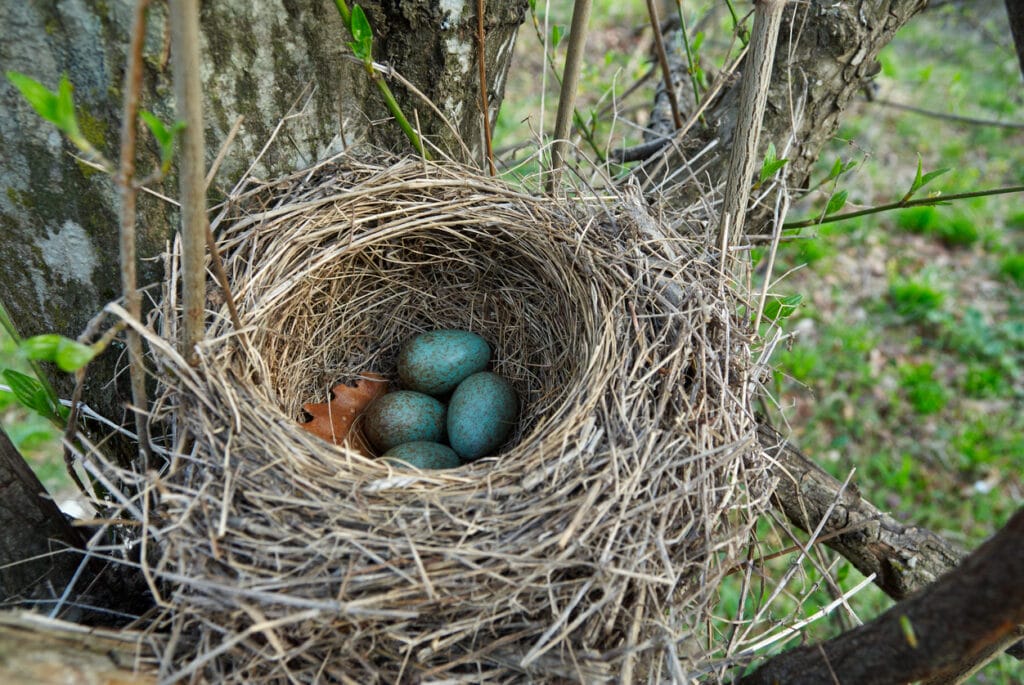
The American Robin (Turdus migratorius) are actually a species of thrush. When the female is laying her eggs, she deposits a pigment called biliverdin onto the eggshells, and this is why an American Robin’s eggs are blue. Evidence suggests that the higher the biliverdin levels are, the healthier the female is, and the color of the eggs will be brighter.
Next time you are wandering in the garden and spot a robin, try to be quiet and calm and see if you can spot the robin’s blue eggs.
Parting Thoughts
Seeing blue eggs can be surprising at first! But as you’ve probably figured out, many kinds of birds lay blue eggs. It’s a natural color for protecting their future offspring. We hope you found this article on what kind of birds lay blue eggs useful and interesting.
If you find blue eggs in your yard, let us know about it in the comments below.
Fly high friends!
FAQ
Several types of birds lay blue eggs, including Dunnocks, House Finches, American Robins and Starlings. The shade of blue can vary, as well as the egg size, the shape can also vary depending on the species of bird.
The Northern Mockingbird is a bird that lays eggs that are blue with brown spots. This bird is extremely popular in North American, especially around cities. They can also be found in the Caribbean and Mexico. Another bird that lays blue eggs with brown spots is the Blackbird.
The Dunnock (also known as hedge sparrow or hedge accentor) typically lays their eggs on the ground, often in a well-hidden location such as a thicket or under a bush.







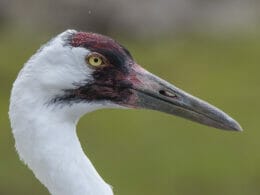
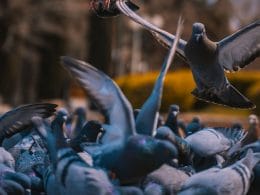
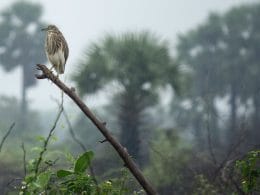
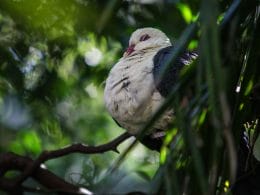
A robin has laid her eggs in a nest she built on my porch light. I was trying to remove the nest when I saw the blue egg. I read it’s a federal law not to remove a nest with eggs so I left it. While sitting on her nest she has become accustomed to us opening the door and going in/out of our house. One day a robin scared me when he swooped at me as I was on the porch. This must have been the male being protective as the female just flies away a little distance away and watches us.
We have 3 blue eggs in a nest the birds made in our bbq. The nest is very big. We have been watching the birds daily as they built it. 2 days ago we opened the lid and saw the eggs. Now we won’t open it until babbies are gone. The birds are definitely not Robins. They are speckled on their backs with black tails. Yellow beaks.
Wow, are you me? I just opened up my bbq and saw the same thing. The nest they built takes up almost the entire inside of our bbq. I really hope they hatch and move out soon, as we are moving to a new house at the end of the month.
I saw a nest under my deck and was in the process of moving it when I noticed 3 blue eggs. I just push the nest back in place.
I’ve got a real doozy of a nest location. We recently found two blue speckled eggs in nest in a wreath on our front door. Then to our surprise another egg appeared yesterday to close out the hat trick!!!
Are you serious? I have an old wreath by my front door and this is the second year I have eggs in the nest from last year. That funny.
I noticed a downed nest in my yard today after seeing two large crows walking around. I looked at the nest and there are a couple of shelf fragments in it that are a pretty blue color. It was extremely windy here yesterday and I’m sure that’s probably why the nest came down out of my tree but I’m questioning, did the crows eat what was in the nest or were they maybe just looking?
we found a nest in our boat where we keep our life jackets saw 1 egg the next week there were 3 blue aggs and a tiny baby bird we take the boat out but the nest is in a very sturdy place
On August 2, I was trimming a small deciduous shrub and discovered a nest with 3 solid blue eggs. Is it a little late for birds to still be nesting?